
Smart Gardening to support monarchs
DOWNLOADJanuary 6, 2017 - Duke Elsner
The annual migratory flights of monarch butterflies are one of the most amazing behaviors in the insect world. Millions of adult monarchs from across the eastern United States and Canada overwinter at a few select forest sites in central Mexico. An alarming decline in the number of butterflies that complete this migration in recent years has been documented. Overwintering populations during 2011-2015 averaged 25% of the population averages for 2000-2005. The weakest year, 2013, was only 8% of the 2000-2005 average.
A combination of natural and human-influenced factors have been linked to the drop in monarch numbers. There are fewer caterpillar host plants (milkweed) available and land development is making habitat unsuitable. Climate patterns and extreme weather such as severe droughts in the United States and unusual winter storms in Mexico have killed many monarchs. Several governmental agencies, researchers and private groups have responded with targeted research, land management plans, educational programs and funding to understand the contributing factors and support monarch butterfly conservation efforts.
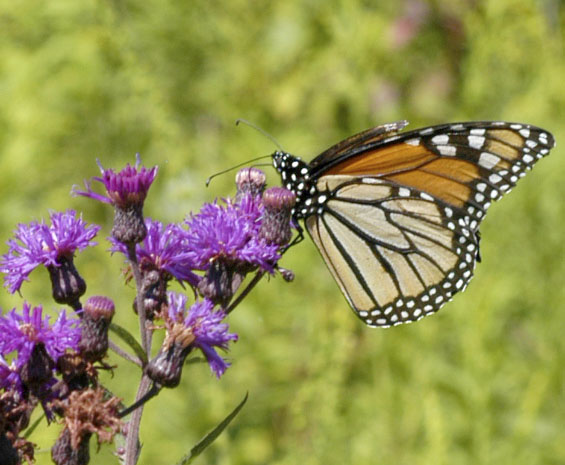
Although broad scale changes in certain farming practices and managing large tracts of natural habitat are key to generating larger populations of monarchs, small landowners and gardeners can also have an impact. Lawns, gardens and landscaping make a significant portion of “green space” in urban and residential areas. You can make monarch-friendly choices in plant selection, garden design and pest management practices that will help make a difference for the future of monarchs, one garden at a time.
Monarch butterflies need plants in the milkweed family for their caterpillars to feed on and plenty of flowers with nectar for the adults. Gardeners who want to help can add more flowers, including milkweed in landscape beds, gardens or even container plantings. Monarch adults and caterpillars are susceptible to several commonly used pesticides, so be careful with your pest management practices to protect monarchs.
Monarch caterpillar host plants—milkweeds
All of the acceptable food plants for monarch caterpillars are in the milkweed family (Apocynaceae). Ten milkweed species are native to Michigan. The most common species are common milkweed (Asclepias syriaca), butterfly milkweed (A. tuberosa) and swamp milkweed (A. incarnata). Common milkweed is the most important for supporting monarch populations. For some gardeners, common milkweed can become a problem because it produces long, underground rhizomes that produce more plants in unwanted places.
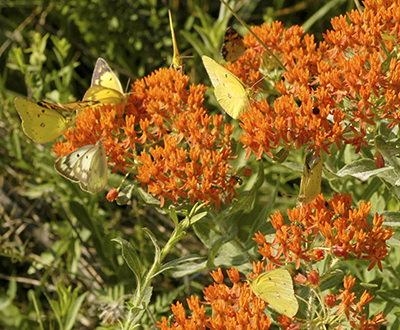
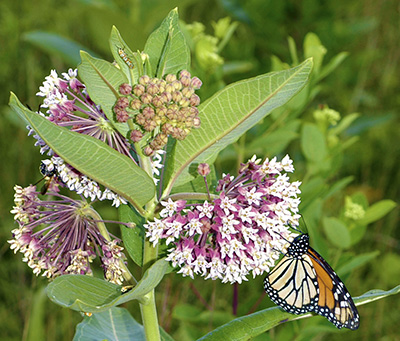
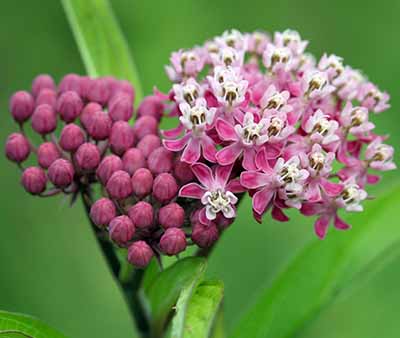
Butterfly milkweed and swamp milkweed can be important hosts, and may be better choices for most garden settings as they do not spread from rhizomes and are easier to manage. Common, butterfly and swamp milkweed are very cold-hardy perennials when grown in suitable locations.
Monarch caterpillars can also feed on tropical milkweed (Asclepias curassavica), which can be grown as an annual plant in Michigan. There is some concern over a disease organism that affects the health and survival of caterpillars on tropical milkweed where the plant can survive as a perennial.
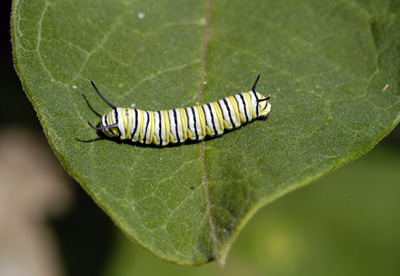
The female monarch is rather picky about what plants she will lay eggs on, almost always choosing plants in the genus Asclepias. However, eggs are sometimes laid on black swallow-wort (Cynanchum louiseae) or pale swallow-wort (C. rossicum), which are unable to support caterpillars. Both are invasive species that should be removed so monarchs do not lay eggs on “dead end” hosts where the resulting caterpillars will not thrive.
Adult monarch food: Nectar in flowering plants
The adult monarch butterfly can feed on the nectar of many species of flowering plants. As they travel throughout Michigan from May through October, select flowers with a wide range of blooming times to support monarchs. You should have something blooming throughout the growing season. A series of blooming plants will also benefit many species of pollinating bees and natural enemies of pests. See our video for more information: bit.ly/SG-savemonarchs.
Some of the trees, shrubs and other plants monarch butterflies visit for nectar include wild cherry, lilac, Labrador tea, blazing star, red clover, dogbane, goldenrods, ironweeds, joe-pye weed, marigolds, asters, rattlesnake-master, sunflowers, thistles, vetches and milkweeds.
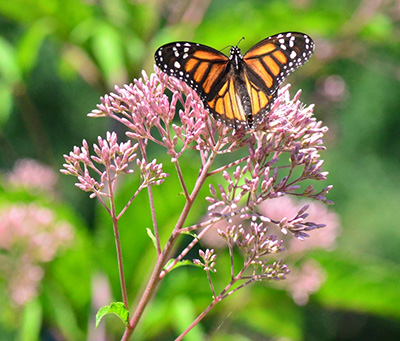
Why are monarchs more at risk than other butterflies?
The monarch is the only butterfly in the United States that has a long migration, traveling well over 1,000 miles to Mexico in the fall. They must be able to find food—nectar in flowering plants—throughout the way to provide much-needed energy for flight. Foul weather during the migration or at their overwintering sites can kill millions of monarchs in a day.
Common milkweed, an important food plant for monarch caterpillars, is considered to be a weed in crop fields and pastures. Technological advances in weed control have greatly reduced the number of common milkweed plants in croplands compared to 20 years ago. Large and small landowners can work together to make a difference by growing smart plants to support monarchs.
More information
- Monarch Joint Venture
- Monarch Watch
- Journey North, for monarch migration maps
- Commission for Environmental Cooperation’s “North American Monarch Conservation Plan”
- USDA’s “Conservation and Management of Monarch Butterflies: A Strategic Framework”
- MSU’s “How to protect and increase pollinators in your landscape”
This material is based upon work supported by the USDA and the National Institute of Food and Agriculture award number(s) 2014-70006-22498.



 Print
Print Email
Email





